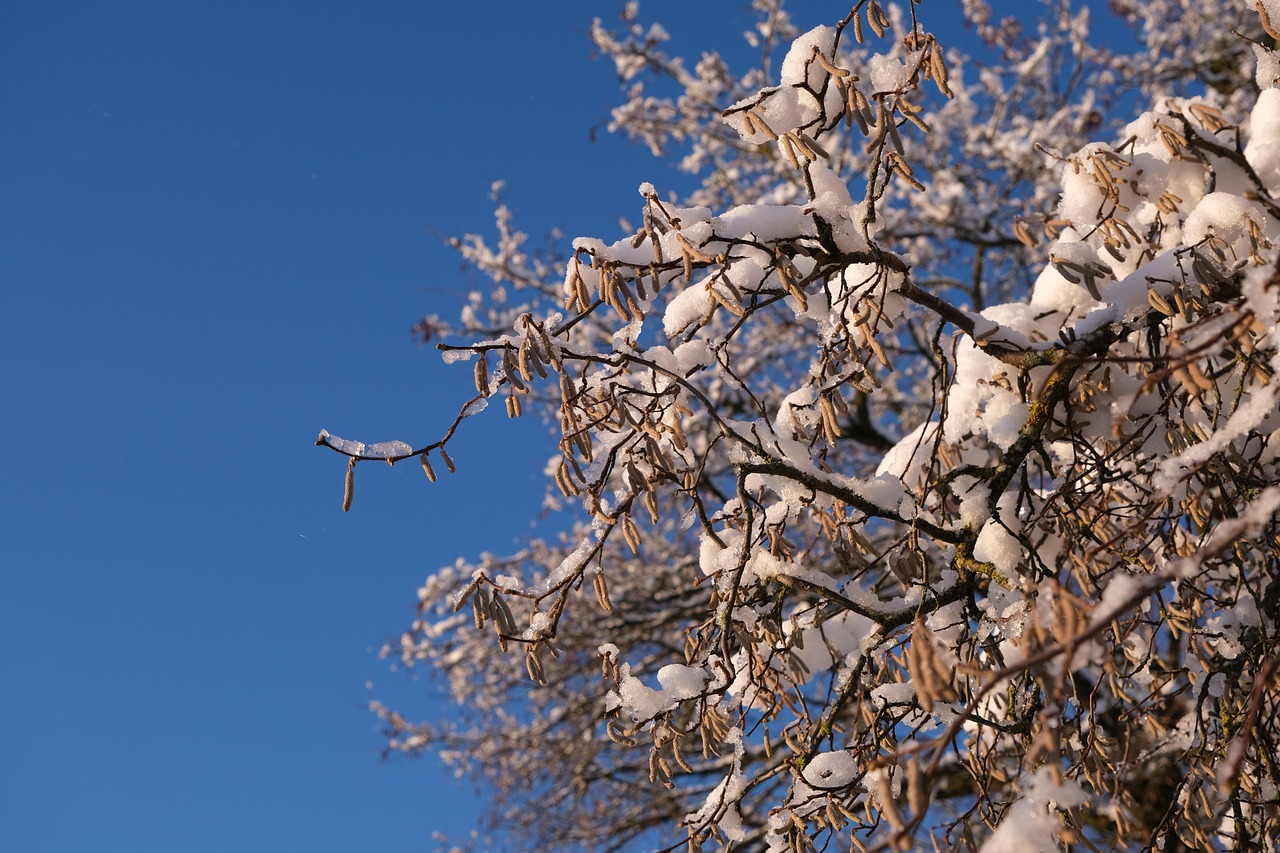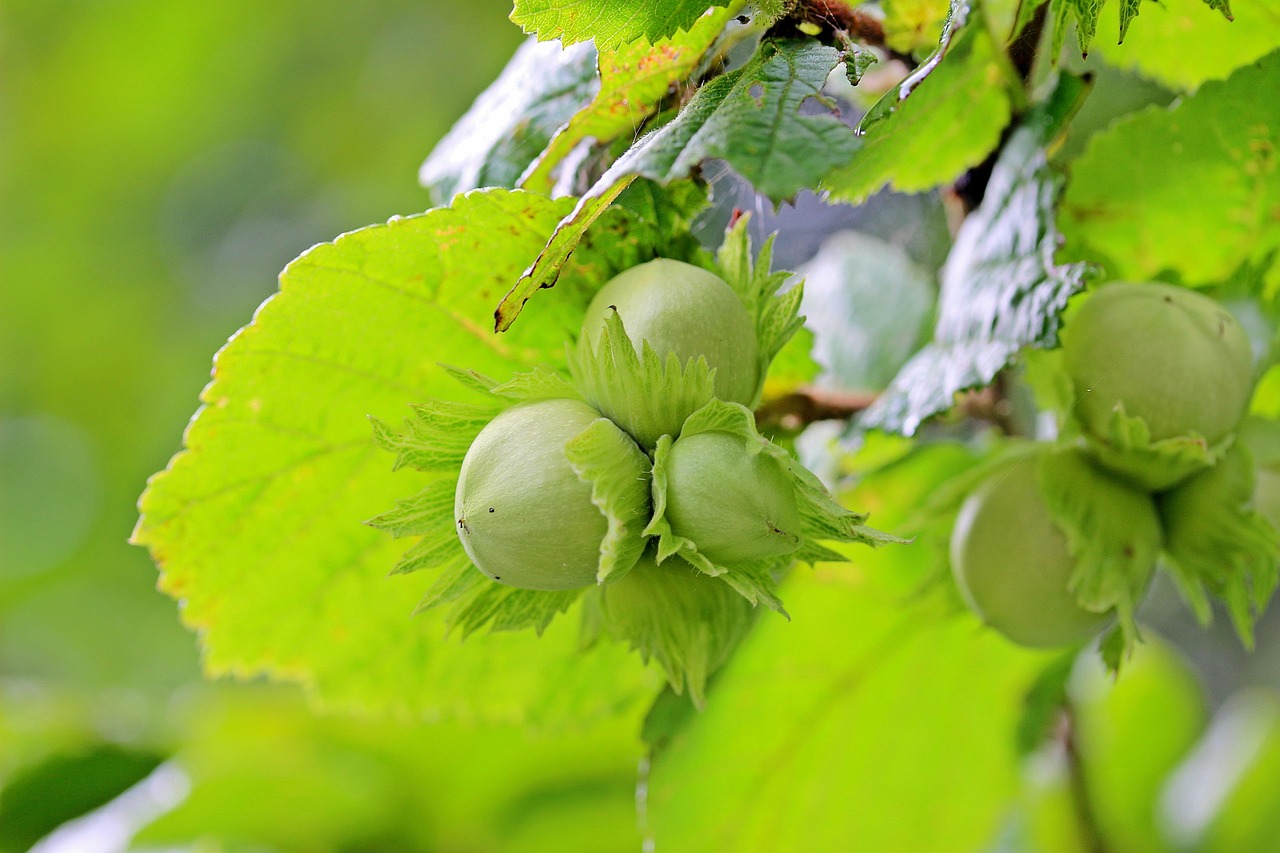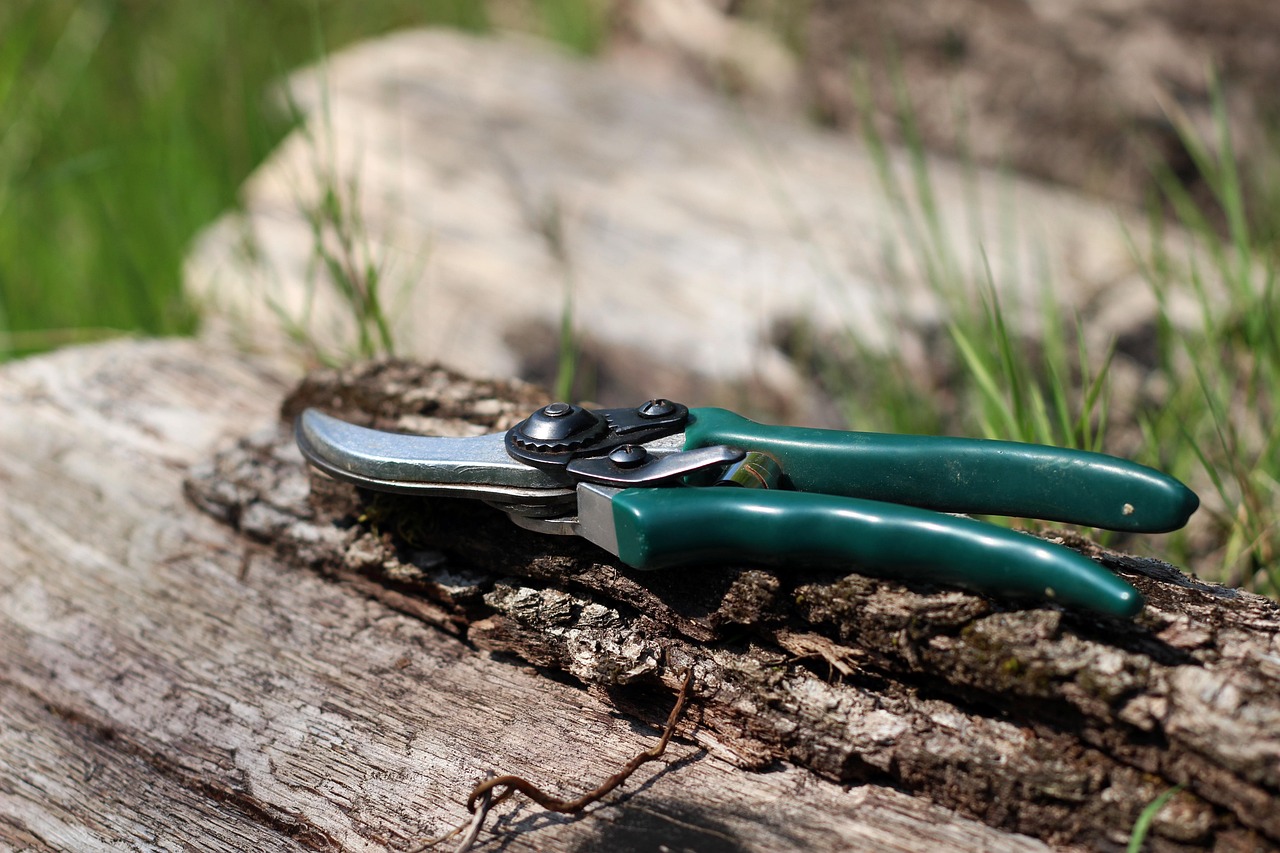Proper pruning of hazelnut trees is essential for optimal orchard spacing, improving air circulation, sunlight access, and tree health. Implementing appropriate techniques and timing ensures maximum yield, reduces disease risk, and promotes sustainable growth. Learn effective pruning strategies to create a healthier, more productive hazelnut orchard.
Understanding Hazelnut Trees
Hazelnut trees (Corylus avellana) are popular for their delicious nuts and are cultivated in various regions worldwide. These trees thrive in well-drained soil and require adequate sunlight for optimal growth. Understanding their growth habits is crucial for effective pruning and orchard management.

Typically, hazelnut trees can grow to heights between 10 to 20 feet. They can spread wide, which makes spacing critical in orchard design. Proper spacing allows for adequate air circulation and sunlight penetration, reducing the risk of disease and promoting healthy growth.
Importance of Pruning
Pruning serves multiple purposes in the management of hazelnut orchards:
- Shape Management: Pruning helps maintain a desirable shape for the trees, facilitating easier harvesting.
- Increased Airflow: Removing excess branches improves airflow, reducing the likelihood of fungal diseases.
- Sunlight Access: Pruning allows more sunlight to reach the inner parts of the tree, promoting better nut development.
- Tree Health: Regular pruning removes dead or diseased limbs, which can harbor pests.
Optimal Orchard Spacing
Spacing is a critical factor in hazelnut orchard design. Each tree requires sufficient space to grow without competing for resources. Proper spacing contributes not only to tree health but also to the overall productivity of the orchard.

Recommended Spacing Guidelines
The optimal spacing for hazelnut trees often depends on the specific variety and local growing conditions. However, general recommendations suggest:
| Tree Variety | Recommended Spacing (Feet) |
|---|---|
| Dutch Varieties | 15-20 |
| American Varieties | 18-25 |
| Hybrid Varieties | 20-30 |
These guidelines ensure that each tree has enough room to grow without overcrowding. Overcrowded trees can lead to competition for nutrients and water, ultimately lowering yields.
When to Prune Hazelnut Trees
The timing of pruning is crucial for the health of hazelnut trees. The best time to prune is during late winter or early spring. This timing allows the trees to heal quickly before the growing season begins. Pruning at this time minimizes stress on the tree and reduces the risk of bleeding sap.

Types of Pruning Techniques
There are several techniques used for pruning hazelnut trees. Each technique serves different purposes and can be applied based on the specific needs of the tree:
- Heading Back: This method involves cutting back the tips of branches to encourage bushier growth.
- Thinning: This technique removes entire branches to open up the canopy, improving airflow.
- Suckering: Removing suckers, or water sprouts, helps focus the tree’s energy on producing nuts.
Each technique should be used thoughtfully to ensure the health and productivity of the trees. Understanding when and how to apply these methods can significantly impact the success of an orchard.
Tools for Pruning
Having the right tools is essential for effective pruning. A few common tools include:

- Pruning Shears: Ideal for small branches and detailed work.
- Loppers: Useful for larger branches that require extra leverage.
- Saws: Needed for cutting thick branches that cannot be managed with shears or loppers.
Maintaining sharp and clean tools is important for making clean cuts, which helps prevent disease transmission between plants.
Conclusion Note on Orchard Management
Effective pruning and proper orchard spacing are integral to successful hazelnut production. By understanding these principles, growers can create healthy environments that maximize yield and quality of nuts.
Advanced Pruning Techniques
As hazelnut trees mature, employing advanced pruning techniques becomes essential for maximizing their productivity and health. These techniques focus on shaping the tree to enhance nut production and minimize disease susceptibility. Understanding these methods can improve the overall management of the orchard.
Crown Management
Crown management involves shaping the upper part of the tree to ensure balanced growth. A well-managed crown facilitates better light penetration and air circulation. The following practices can help achieve effective crown management:
- Selective Thinning: Remove branches that are crowding the center of the tree, allowing sunlight to reach all parts of the crown.
- Maintaining Height: Regularly trim the top of the tree to keep it at a manageable height for harvesting.
- Encouraging Lateral Growth: Promote side branches by selectively pruning back competing vertical shoots.
By focusing on these practices, growers can create a more open crown that supports healthy growth and nut production.
Structural Pruning
Structural pruning is crucial during the formative years of hazelnut trees. This technique shapes the tree’s structure to promote stability and strength. Key considerations include:
- Establishing a Central Leader: For younger trees, select a strong central leader to guide future growth.
- Removing Competing Leaders: Eliminate any competing branches that may disrupt the central leader’s growth.
- Spacing Branches: Ensure that primary branches are evenly spaced around the trunk to create a balanced structure.
These practices help develop a sturdy framework for the tree, enabling it to support heavier nut loads as it matures.
Pest and Disease Management Through Pruning
Pruning is also a valuable tool in managing pests and diseases in hazelnut orchards. By maintaining tree health, growers can reduce the likelihood of infestations and infections. Here are several strategies:
Identifying Problem Areas
Regular inspections during pruning can help identify areas affected by pests or diseases. Key indicators include:
- Discoloration: Look for leaves or branches that appear yellow or brown.
- Dead or Wilted Branches: Remove any branches that show signs of dieback.
- Pest Presence: Check for visible pests such as aphids or mites on leaves and stems.
Implementing Preventative Measures
Incorporating preventative measures during pruning can help protect trees from various threats. These measures include:
- Sanitation: Clean tools thoroughly between cuts to prevent disease spread.
- Removing Infected Material: Dispose of any diseased or pest-infested branches promptly.
- Cultural Practices: Maintain proper soil health and moisture levels to bolster tree resilience against pests and diseases.
By addressing these factors, growers can minimize risks and promote healthier trees.
The Role of Timing in Pruning
The timing of pruning is critical for achieving desired outcomes in hazelnut orchards. Different stages of the growing season present unique opportunities for various pruning techniques. Understanding these stages can enhance the effectiveness of pruning efforts.
Winter Pruning
Winter pruning is often recommended as it allows growers to assess the tree structure without foliage obstruction. Benefits of winter pruning include:
- Easier Visibility: With no leaves, it is easier to see branch structure and identify areas for thinning or shaping.
- Reduced Stress: Trees are dormant, which means they are less stressed by pruning activities.
- Encouragement of Growth: Pruning in late winter promotes vigorous growth as trees awaken in spring.
Summer Pruning
Summer pruning can also be beneficial for certain purposes. While it is less common, it has specific advantages:
- Curbing Excessive Growth: Removing excessive growth helps redirect energy into nut production rather than vegetative growth.
- Avoiding Disease Spread: Summer pruning can help remove infected material before it spreads further in the growing season.
- Sculpting Shape: Fine-tuning tree shape during the active growing season can enhance light penetration.
The choice between winter and summer pruning depends on the specific goals and conditions of the orchard, so growers should carefully consider their options.
Monitoring Tree Health Post-Pruning
After pruning, monitoring tree health is essential to ensure recovery and growth. Observing changes can provide insights into the effectiveness of pruning practices. Key aspects to monitor include:
- New Growth: Watch for healthy new shoots emerging from pruned areas.
- Pest Activity: Remain vigilant for any signs of pest infestation following pruning.
- Disease Symptoms: Keep an eye out for any unexpected discoloration or wilting of leaves or branches.
This ongoing observation helps growers make timely adjustments and interventions, ensuring long-term success in their hazelnut orchards.
Common Mistakes in Hazelnut Tree Pruning
Even experienced growers can make mistakes when pruning hazelnut trees. Understanding common pitfalls can help avoid them and ensure effective orchard management. Here are several mistakes to watch out for:
Over-Pruning
One of the most significant errors is over-pruning, which can severely impact tree health. Signs of over-pruning include:
- Stunted Growth: Excessive removal of branches can hinder the tree’s ability to produce new growth.
- Reduced Yield: Over-pruned trees may produce fewer nuts due to stress.
- Increased Vulnerability: Trees that are pruned too heavily can become more susceptible to pests and diseases.
To prevent over-pruning, always assess the tree’s structure and health before making cuts. Aim for a balanced approach that supports growth without excessive removal.
Ignoring Tree Age and Variety
Different hazelnut varieties and tree ages require tailored pruning approaches. Neglecting these factors can lead to inappropriate practices:
- Younger Trees: These require shaping and structural pruning to guide growth.
- Mature Trees: Focus on maintenance pruning that promotes health and productivity.
- Varietal Differences: Some varieties may have specific growth habits that necessitate unique pruning techniques.
Understanding the specific needs of each tree can enhance the pruning process and overall orchard health.
The Impact of Environmental Conditions
Environmental conditions play a vital role in the effectiveness of pruning. Growers should consider how various factors affect tree health and growth:
Soil Quality
The quality of soil directly influences tree vitality. Healthy soil supports root growth and nutrient uptake. Key aspects to monitor include:
- Nutrient Levels: Regular soil testing can help identify deficiencies that may affect tree health.
- Moisture Content: Ensure consistent moisture levels, particularly after pruning, to support new growth.
- Drainage: Well-drained soil prevents waterlogging, reducing the risk of root diseases.
Weather Conditions
Weather conditions during and after pruning can significantly affect recovery:
- Temperature: Avoid pruning during extreme heat or cold, which can stress trees.
- Rainfall: Excess moisture can promote disease, so consider the forecast when scheduling pruning activities.
- Wind: High winds can damage newly pruned branches; take care if strong winds are expected.
By aligning pruning efforts with favorable weather conditions, growers can enhance recovery and promote healthy growth.
The Role of Fertilization Post-Pruning
Fertilization is a critical component in supporting hazelnut trees after pruning. Proper nutrient management helps trees recover and thrive. Here are essential considerations:
Nutrient Requirements
Hazelnut trees benefit from a balanced nutrient supply, particularly following pruning. Key nutrients include:
- Nitrogen: Essential for new growth and leaf development.
- Phosphorus: Supports root health and flowering.
- Potassium: Aids in overall tree vigor and nut quality.
Timing of Fertilization
The timing of fertilization is crucial for maximizing its effectiveness. Consider the following guidelines:
- Pre-Pruning Application: Applying fertilizer a few weeks before pruning can provide essential nutrients for new growth.
- Post-Pruning Application: Fertilizing shortly after pruning helps support recovery and enhances the tree’s ability to produce new shoots.
A soil test can guide specific fertilizer applications, ensuring that trees receive the appropriate nutrients based on their needs.
Irrigation Practices Following Pruning
Irrigation is another critical factor in maintaining tree health after pruning. Adequate watering supports recovery and promotes healthy growth. Key practices include:
Watering Frequency
After pruning, trees may require more frequent watering to support new growth. Guidelines for irrigation include:
- Soil Moisture Monitoring: Regularly check soil moisture levels to determine when watering is needed.
- Avoid Overwatering: Ensure that water does not pool around the roots, as this can lead to root rot.
Irrigation Methods
Selecting the right irrigation method is vital for providing consistent moisture. Common methods include:
- Drip Irrigation: This method provides targeted watering directly to the roots, minimizing water waste.
- Sprinkler Systems: Effective for larger orchards, but care must be taken to avoid wetting foliage during high humidity to prevent disease.
Implementing effective irrigation practices ensures that hazelnut trees recover well after pruning, setting the stage for healthy growth and productivity in the upcoming season.
Strategies for Sustainable Hazelnut Orchard Management
In addition to pruning and proper spacing, sustainable management practices can greatly enhance the productivity and longevity of hazelnut orchards. Growers should consider integrating several strategies to ensure both immediate success and long-term viability.
Integrated Pest Management (IPM)
Implementing Integrated Pest Management (IPM) is crucial for minimizing pest damage while reducing reliance on chemical treatments. Key components of IPM include:
- Monitoring: Regularly inspect trees for signs of pests and diseases. Use traps and visual inspections to assess pest populations.
- Biological Controls: Introduce beneficial insects, such as ladybugs and lacewings, which can naturally reduce pest populations.
- Cultural Practices: Implement practices that promote tree health, such as proper watering, fertilization, and pruning, which can make trees less susceptible to pests.
- Pesticide Use: When necessary, use targeted pesticides at the appropriate times to minimize environmental impact.
By employing IPM, growers can create a balanced ecosystem that supports tree health while managing pest populations effectively.
Soil Health Management
Maintaining soil health is essential for hazelnut tree vitality. Healthy soil promotes robust root systems and nutrient uptake. Strategies for improving soil health include:
- Cover Cropping: Plant cover crops during the off-season to prevent erosion, enhance soil structure, and improve nutrient content.
- Organic Matter Addition: Regularly incorporate compost or other organic amendments to enrich soil fertility.
- Crop Rotation: Rotate crops in the orchard to break pest cycles and improve soil biodiversity.
Healthy soil contributes significantly to the growth and productivity of hazelnut trees, making it a foundational aspect of orchard management.
Water Conservation Techniques
Water conservation is critical, especially in areas facing drought conditions. Growers can implement various techniques to optimize water use:
- Mulching: Apply organic mulch around the base of trees to retain moisture and suppress weeds.
- Rainwater Harvesting: Collect rainwater from structures to use for irrigation, reducing reliance on municipal water sources.
- Soil Moisture Sensors: Utilize technology to monitor soil moisture levels and optimize irrigation schedules based on real-time data.
These water conservation strategies ensure that trees receive adequate moisture without wasting resources, supporting both sustainability and productivity.
Final Thoughts
Successfully managing a hazelnut orchard requires a comprehensive approach that encompasses effective pruning, optimal spacing, pest management, soil health, and water conservation. Each element plays a vital role in ensuring the health and productivity of the trees.
By understanding the specific needs of hazelnut trees and implementing best practices, growers can create an environment that fosters growth, maximizes yield, and enhances nut quality. Continuous monitoring and adjustment based on tree health are essential for long-term success.
As the demand for hazelnuts continues to grow, adopting sustainable management practices will not only benefit individual orchards but also contribute to the overall health of the agricultural landscape. Through thoughtful interventions and proactive management, hazelnut growers can ensure a thriving future for their orchards.
In conclusion, with careful attention to pruning techniques, spacing considerations, pest management strategies, soil health, and water conservation practices, growers can optimize their hazelnut orchards for both current success and future sustainability. By embracing these practices, the hazelnut industry can thrive in an ever-evolving agricultural environment.
